Edelweiss: description, varieties, planting and care

Gardening enthusiasts are no longer content with banal asters, dahlias and gladioli in their backyard plots - give them exotic. And what could be more unusual than a mountain flower growing on rugged peaks? We are talking about a handsome edelweiss. How to "make friends" with him and where to get seedlings? Read in our article.

What is it and where does it grow?
There is a beautiful legend about the origin of edelweiss. In ancient times, a beautiful fairy lived in the Alps in the highlands. And she fell in love with the guy who lived at the foot of the mountain. However, they were not destined to be together: the young man could not get to the top, and the fairy was forbidden to go down. She shed bitter tears of her fate, and they, falling to the ground, turned into edelweiss. This sad and wonderful story made edelweiss a symbol of true love. - since it grows in difficult terrain, it can only be obtained by climbing high in the mountains and spending several days there in search. The man who gave the beloved edelweiss, thereby confessed to her sincere and ardent feelings.






Is this flower really that hard to find? Let's turn to science: in nature, edelweiss grows in the alpine and subalpine zones on rocky slopes, at an altitude of about 2 thousand meters above sea level... Not everyone, even a trained person, will be able to get there. Edelweiss blooms in summer, June and July. Its scientific name is leontopodium. It consists of two Greek words: "leon" - lion and "podion" - paw. This combination is no coincidence: this flower really looks like a lion's paw. The more common name is edelweiss, a combination of the German words "edel" - "noble" and "weiss" - "white".




The leontopodium belongs to the genus of dicotyledonous herbaceous plants of the Asteraceae or Asteraceae family. It is an annual and perennial. The height of the flower varies from 12 to 25 cm.
The inflorescence is dense, consists of several flower baskets, collected in a bunch. They are usually white or yellowish and surrounded by linear or lanceolate stellate leaves with a silvery "dusting". Due to its rarity and inaccessibility, edelweiss was endangered for a long time, as there were many “hunters” for it. It is currently listed in the Red Book.

Variety of species
About 40 varieties of leontopodium are known, however, flower growers use only 8 of them for garden cultivation. Below is a brief description of them.
- Alpine. The most common type. It is characterized by the presence of terry apical foliage, folding into an "asterisk". It can reach a height of 20 cm.


- Edelweiss-like. The height is about 35 cm, the leaves are pointed, linear, with a shade of gray felt, often almost naked on top. The inflorescence consists of a "bunch" of baskets (up to 5 pieces), each with a diameter of 0.4-0.8 cm.


- Siberian (Palibina). In terms of characteristics, it is similar to the alpine variety, but its bushes are larger and with smaller flowers.
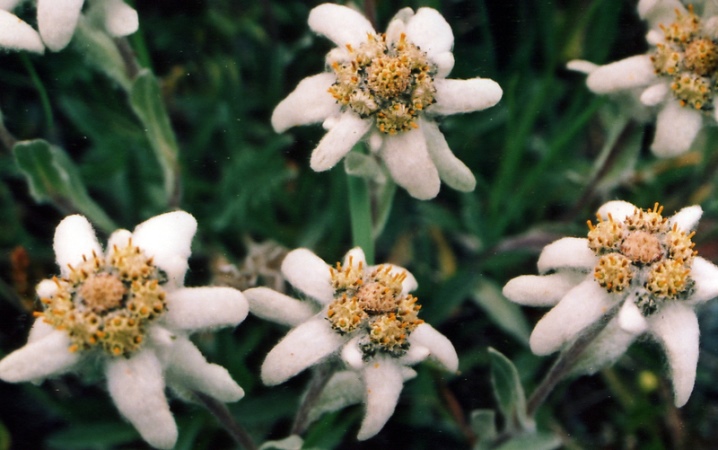
- Pale yellow crowded. It has bald, single stems. The leaves of the bracts are lanceolate, elongated, with slightly turned edges, greenish-yellow.


- Kurilskiy. An endemic plant that grows exclusively in the mountains of the Kuril Islands. The stems are erect, they can reach a height of 20 cm.Bracts are shortened, wide, forming an "asterisk". They are edged on both sides, resembling white felt in texture.

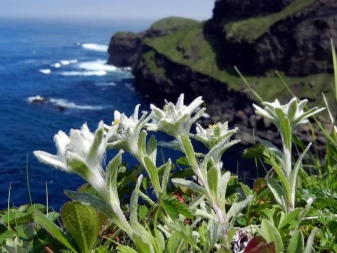
- Dwarf. As the name implies, the smallest of all the leontopodium species is only 10 cm in height. Under natural conditions, it "climbs" high mountains - up to 3500 meters above sea level. Baskets, up to 5 pieces, are clustered on top of the stem, the leaves are spatulate, not forming an "asterisk".


- Two-tone. The stem has a height of up to 35 cm, the leaves of the bract are not equal in length, fold into an "asterisk" with a diameter of 3-4 cm with the number of "rays" up to 10 pieces. Above, the leaves are green, below - white-felt.

- Steppe. It grows up to 20 cm in height. The stems grow in a "bunch", have a cobweb-fluffy texture and a gray-white tint. Leaves are pointed, linear or linear-lanceolate, yellowish or whitish in the bracts. Fold up into a loose "asterisk" of irregular shape.

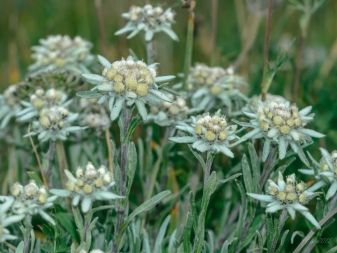
How to plant?
To begin with, let's clarify that edelweiss seeds can currently be found in Russia on free sale in specialized stores or on the Internet. However, do not think that if his natural growing conditions are so harsh, he will be "happy" with any more or less acceptable soil. In fact, it is quite difficult to grow it on a personal plot. These are the requirements of the leontopodium.
- The soil must be dry, light, permeable, containing limestone.
- No fertilizers! This plant does not like either organic matter or mineral additives. And if you "seasoned" the planting site with fresh manure, you can say goodbye to the idea of cultivating leontopodium in your garden.
- Sufficient sun exposure. The capricious edelweiss, accustomed to growing in the highlands lit by the sun, will not take root in a shaded place.

So, all 3 conditions are met. Now you can plant leontopodium.
- In late winter or early spring, prepare the mixture by mixing 2 parts of garden or deciduous soil and one part of perlite, coarse sand.
- Scatter the seed over the surface, pressing down slightly with the palm of your hand.
- Sprinkle with a spray bottle to prevent over-saturation of the soil with moisture.
- Cover the container with cellophane or a glass plate while maintaining a constant t = 10 ° C.
- After the first sprouts appear, remove the covering material by placing the container in a well insolated warm place.
- When the young growth reaches a height of 2 cm, plant the plants in different containers.
- Watering is allowed only moderately, without overdrying the soil, but also without flooding, in order to avoid the appearance of putrefactive processes.
- The disembarkation of young edelweiss takes place around the end of April or the beginning of May. A gap of at least 15 cm is maintained between the plants.


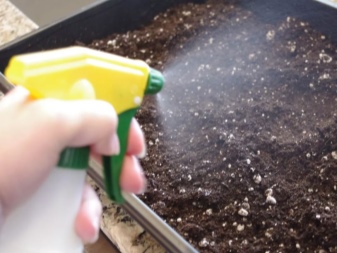

Generally, in natural conditions, leontopodium reproduces by scattering seed material with the wind... The seeds are clogged in the cracks of the rock and grow there, not really needing full-fledged soil. It is on this basis that when sowing seeds by hand, it is not recommended to deepen them too deeply into the ground - it will be difficult for them to germinate through a thick earth layer. If you don't want to mess with the seedlings, you can try sowing the seeds directly into the open field. As a rule, this requires an alpine slide in the garden.

In the spring, when the threat of frost is over, plant your hill with edelweiss seeds. Remember to prohibit excessive deepening - 1-2 cm will be enough. It is not worthwhile to thicken the plantings, otherwise thinning will be required later. The optimal distance between the seeds is 8 cm. Whatever method of planting you choose, it is recommended to carry out a preliminary stratification of the seed material: mix it with moistened soil and hide it in the refrigerator for 7-14 days.

If everything was done correctly, the seeds will sprout within 10 days. In some cases, the wait can be up to 2 months.
How to take care of it properly?
Leontopodium does not require much maintenance. It should be watered very sparingly if it is hot and there has been no rain for a long time. And so he has enough natural precipitation. Loosening the soil is not worth it - it can damage the plant. But weeding is required. Leontopodium is quite cold-resistant, but for the winter it should be covered with a layer of mulch: fallen leaves, sawdust or peat. Once every 2-3 years, edelweiss need a transplant.

Reproduction methods
There are 2 effective ways of breeding leontopodium: dividing the bush and seeds. Let's consider both.
- If the plant is already growing in your area, you can try to divide it into several parts... Its roots are strong and resilient enough to handle stress and adapt to new conditions. By the way, it is this method that allows you to preserve all the characteristics of the "mother" plant. The division procedure can be carried out in the spring or in August-September. Delenka will bloom in 2-3 years after disembarkation. Use only a well-sharpened knife or pruning shears with sharp blades. Carefully dig out the bush, and, without shaking the ground from the roots, cut it into 2 or 3 parts, making sure that each of them has a growth point. Plant the resulting divisions at a distance of at least 25 cm.
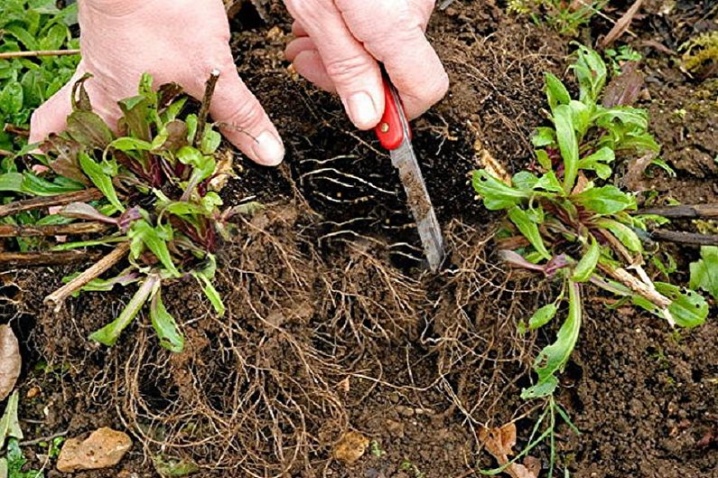
- An effective way of breeding leontopodium is collecting seed. After the flower withers, many seeds are formed. Each of them is equipped with a "parachute" similar to a dandelion. It is thanks to him that the seeds are easily picked up and carried by the wind. Seed material should be collected and sown in open ground in early November. Be sure to sprinkle it with coarse sand when planting and cover it with spruce paws for the winter. The next year, in the spring, they will give their first shoots.

Diseases and pests
Edelweiss growing in the highlands is quite resistant to the vast majority of diseases and harmful insects. However, not everyone. Leontopodium can get sick for one reason - from excess moisture in the soil. To avoid this, it is recommended to plant this plant next to conifers that absorb excess water. Creating an artificial drought or replanting to a new place does not always lead to a positive result.

The pests attacking edelweiss are slugs and aphids. If slugs can be collected by hand and destroyed, aphid attack is fatal. If you do not treat leontopodium with an insecticidal preparation in time, it will die. No other methods, including folk ones, will help here.
Use in landscape design
Perhaps the most obvious thing that comes to mind when mentioning the use of edelweiss in landscape design is its landing on an alpine slide. And this is not surprising: given its natural growing conditions, it looks very organic there. It is also used by:
- for the formation of "dry" bouquets - for this, the plant is cut during the period of maximum saturation of its color and dried "head" down;
- for planting in a stone garden, rock gardens, rockeries in tandem with asters, saintpaulias, violets;
- as a border in tandem with miniature roses;
- the dwarf variety is grown as a ground cover plant;
- higher varieties perfectly set off conifers of trees and shrubs (for example, thuja, cypress, juniper) or flowering bushes (forsythia, hydrangea).




For information on how to properly care for edelweiss, see the next video.







































































































The comment was sent successfully.